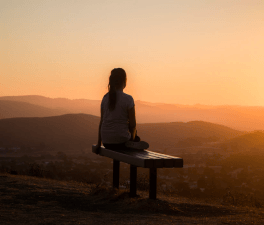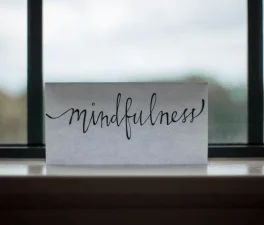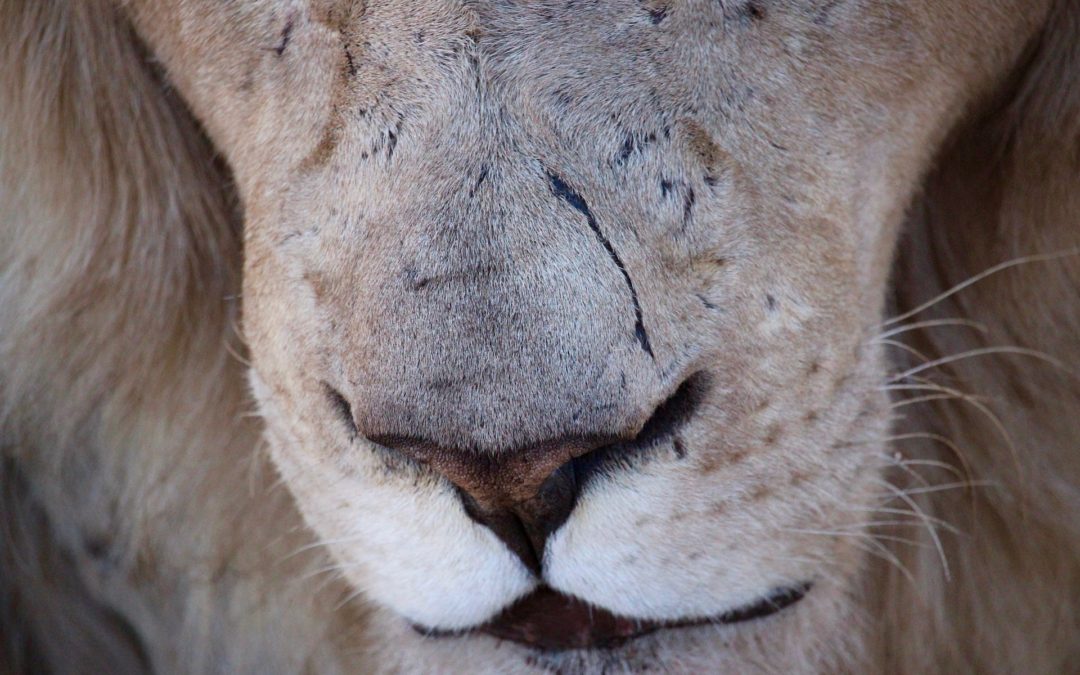
by LifeWhys | Apr 16, 2021 | Uncategorized
“Well, imagine an ice cream cone with two scoops on top. You know the double headed cones where the scoops sit side by side?” the doctor looked up from his fist he was using as a prop to make sure I was following along.
I nod indicating that I am with him.
“Well, now imagine if one of those scoops sloughs off the side and separates from the other. Maybe it breaks free and maybe it just sits there. On the verge of slipping off,” He was now using his other fist as an example of the scoop slipping free yet hanging on.
If only it were an ice cream cone that he was describing and not the ball of my shoulder bone. I listened, not really comprehending exactly the seriousness of my situation. There was talk about a main artery and nerve that ran along the top of the humerus. It all sounded like a teacher from the Charlie Brown cartoons.
“Wah, wah, wah, wah, wah,” says the unseen authority figure.
I guess the cocktail of pain medications did not help my comprehension or attention abilities. Thank goodness they sent me home with well-written instructions on what to do and who to contact next.
I stumbled out of the emergency center into the bright sunlight and stood for a moment gathering my wits – or at the least the ones I could catch. Looking around the parking lot, I spotted our grey Sienna and my husband sitting inside. Due to the new COVID restrictions, he was not able to come in with me and had to wait in the car. I walked over and reached for the door handle. He had already hopped out of the driver side and sprang around the front to meet me at the door and help me in. Gently guiding me into the seat, he carefully closed the door. His silence spoke volumes.
Now inside the care, I fumbled for the seat belt. He reached across and pulled it gently around me, being extra careful not to bump my left arm, and snapped the lock into place. I felt the tears pressing behind my eyes, begging to be released. Swallowing hard, I asked for a drink of water. The nausea settled and the tears held as I drank deeply from my hydro flask.
I had already texted him letting him know the prognosis that I had fractured my shoulder. I was now looking at physical therapy and possibly surgery. We drove home and I went straight to the restroom where I proceeded to writhe in pain trying to get my pants down one-handed. Trying to stand up I nearly passed out in pain. Not from my shoulder, but from my left knee. How had I missed that? Why was my knee so painful and how am I going to get off the toilet without calling for help? I was determined to get my ass off that toilet and so I forced my right leg to do all the heavy lifting as I pulled with my right arm on the ledge of the counter.
“Are you ok in there?” my husband called to me.
“Yes, I’m fine,” I groaned between my firmly gritted teeth as I hauled and pushed with all my might to get myself off the toilet.
Standing, sweating, and breathing heavily, I still had to get my pants up. I stood and took several long deep breaths trying to calm my shaking body. I was clearly still in shock from the trauma of the morning. However, there was no way I was going to allow my husband in to help me pull my pants up. Slowly, carefully, gently, I eased up the waistband of my leggings and managed to make myself presentable. Opening the door, I found him sitting on the bedside waiting for me.
“You know, after 20+ years together, I think I can help you pull your pants up,” he said with a wry smile.
He stood up and gave me a very careful hug and I felt the tears pushing into my eyes once again.
Stepping back, I gave him a kiss on the cheek and thanked him for being such an amazing husband, but there was no way I was going to let him ‘help’ me in the bathroom.
Sitting at my desk, my arm hanging limply in the sling, I felt the pressure of the tears return as I pecked out my first one-handed email, very, very slowly.
Incapacitated
How will I shower and dress myself?
How long will it take to recover?
Burden
Will I be able to fully use my arm again?
How am I going to finish my books if I can’t type properly?
Helpless
Who’s going to take care of the chickens?
How am I going to plant my seeds for my spring garden?
Limited
How am I going to go to the bathroom?
Incapacitated
Unable to care for myself
I sat there staring at my keyboard. My right hand resting on the edge of the desk and my left arm resting in the sling. I took several long, deep breaths and tried to calm my racing mind.
“Stop feeling sorry for yourself,” the voice in my head chastised. “Bryce and Lionel will do anything you need them to do to help.”
“But I can’t expect them to do everything for me. I’m not even capable of dressing myself.”
“Yet,” the more positive voice in my head added.
“There is no way I’m going to let them help me in the bathroom or shower. That’s not an option,” I cried into the blackness that was descending across my mind.
“Do they love you?”
“Yes.”
“Do you love them?”
“Of course.”
“What if this were one of them instead of you who had fallen and fractured their shoulder? What would you do?” That damn rational voice asked.
“I would do whatever I need to do to help them heal and recover,” I answered after a brief pause, now seeing where this discussion was heading.
“Then why would you rob them of the opportunity to help you? You are always giving and doing for everyone else. Allow them to do for you what you would happily do for them.”
The message was clear and the tears streamed freely down my cheeks as I realized, I had called this into existence in my resistance to letting others help me. My fear of being incapacitated in some way, being helpless, drives me to do and be everything for everyone but me. It’s my turn to take care of myself and allow others to help me in anyway they can.
My husband and son have assumed the responsibilities for cooking, laundry, chickens, dogs, plants, etc. I have released my attachment to how the towels are folded, what and how they are preparing food (except regarding WildFit guidelines), feeding the dogs and chickens. They are doing great and I’m enjoying letting them care for me – mostly.
I released my fear of being incapacitated and allowed myself to be cared for by those who love me in the same way I would happily care for them.

by LifeWhys | Oct 28, 2019 | Uncategorized
I can still feel the butterflies beating rapidly in my belly…
Fear is a basic human survival instinct. Without fear we would surely all be dead. Fear drives us to think about what the worst possible outcome might be. Unfortunately, this can cause us to fixate on that outcome and by doing that we can actually call it into being. This way we can prove ourselves right and reinforce why we should continue to be afraid.
I use fear differently. I use fear as a tool to drive myself, to transform my beliefs and to continue growing and evolving. If I lived in fear, then I would still be living in Cedar Rapids, IA, working as a manager or by now, possibly a Senior Manager. Instead, I used my fear to propel me on a life long journey of exploring new places, meeting interesting people and generally pushing my boundaries of comfort and familiarity.
I once delivered a presentation on public-private-partnerships. I was asked to present it to the French national Assembly. Being fairly new to life in Europe, I had no idea what I was signing up for or to who I was delivering the presentation. I had been living in England for a little over a year and wasn’t very familiar with European politics or the government structures. After I created my presentation and learned enough French to open my speech in their native language (albeit horribly butchered), I was practicing my presentation when my fiancé said to me with such pride in his eyes, “Wow, I think it’s so great that you’re presenting to the French National Assembly. What a great achievement.”
Innocently, I asked him why he thought it was such a big deal. When he then told me that it was the equivalent to presenting to the House of Congress or something similar, I can tell you the bottom dropped out of my stomach and that liquid cold feeling ran through my veins. The fear began to set in and my mind raced to think about how I could possibly get out of this mess. How had I let myself be so naïve in thinking this was something I could do? I was nearly paralyzed into withdrawing from the event. I phoned my dear friend, Nicole, who lived in Paris at the time and asked her what she thought I should do. She confirmed that the Assembly is the policy arm of the French government and went on to tell me how fantastic she thought it was that I was actually presenting to them. She offered to help me with my French as she speaks several languages fluently. Together we recrafted my opening and polished my presentation to reflect a more French appeal.
I stayed with her for a few days prior to the event and she helped me navigate the Parisian transportation network so I could easily find my way on the day of the presentation. She even escorted me to the Assembly House and encouraged me all the way. Then I was on my own sitting on the stage while the attendees filed into the hall. There were representatives from the main industry operators and Assembly officials all sitting in the front row. I was certain they were ready to pounce on me and make me into fois gras to be served as a snack after the event.
I can still feel the butterflies beating rapidly in my belly and the sweat slicking my palms almost smearing the ink on my presentation notes gripped so tightly in my hands. I was one of several presenters / industry experts that day. We all sat on chairs aligned on the stage with a moderator to facilitate the order and the questions. The moderator welcomed the audience, queued up the first presenter and my mind drifted listening to him and thinking about my own presentation. How his was so much better and mine was so juvenile and lacked so much depth. His graphics were so incredibly good and mine looked like my son had drawn them. Then the moment came and my name was called as the next to present. I swallowed….hard….stood up…wobbled a little as I took my place behind the podium. Gripping the sides of the stand, I looked out at the audience and said, “Bonjour, je suis es …….”. The rest was a bit of a blur. I remember getting a chuckle during my opening at the expected moment and then I relaxed a bit. I released the death grip of the podium and sailed through the rest of the presentation with grace.
Following my delivery there was period of questions and answers. I artfully responded either directly or through the moderator who also acted as the translator for those who were not adept in English. I noticed there were headsets, much like the ones in Geneva when I had presented there, and a booth of translators located at the back of the room. I was able to answer the questions with ease and many of the participants came up to me following the presentation sessions to congratulate me and tell me how brave I was to open in French. They appreciated my attempt at their language although they also told me I needed to keep practicing.
It was an amazing experience. One that I never would have had if I had allowed fear to rule me. I had to dig deep and reach out to my friend to help me through it. When the realization of what I had taken on had first hit me, I had two choices:
- Withdraw: people do it all the time. Some family or business emergency comes up and the presenter has to withdraw. I was certain I could come up with a plausible reason to NOT present. The excuses ran the gambit of my son is ill, my company needs me on a major project with critical deadlines, I’m ill with some mysterious disease, my dog sat on my laptop and broke it (oh, wait, I didn’t have a dog at that time).
OR
- Go through with it: push my boundaries, learn from the experience it would look great on my resume.
I asked myself “What’s the worst that could happen”? They might not like me. They won’t laugh at my joke. They won’t like me butchering their language. My presentation will be laughed at. I could have played it safe and withdrawn from presenting. I didn’t. I decided I would not let fear rule me and even if they didn’t laugh at my joke or like me – so what? As long as I don’t start a riot, then what does it matter that I’m presenting to politicians and industry leaders. I chose to use my fear to spur me into digging deep, asking for assistance and expanding my comfort zone.
I was at a gathering of friends recently when I said to a friend who was telling me about something she was debating about doing. I asked her “What’s the worst that could happen?” Over hearing my comment, another guest interjected with “Oh no, never say that. If you ask that question, then it will happen.” I looked at her for a minute, a little taken aback by her adamant response. I realized in that moment that she was coming from a place of fear. I diplomatically let her know that I didn’t agree with this view because unless we understand what the parameters are we will not be able to make a rational decision. I explained that I believe we can chose to focus on the negative (ie. The worst possible outcome) or we can acknowledge it, then decide how we feel about it and make an informed decision. She listened intently and told me she had never thought about in those terms.
When making a decision that can have potentially major consequences, I ask myself two questions:
- What’s the best possible outcome?
- What’s the worst possible outcome?
This gives me a spectrum within which I can then operate. I’m sure my years of project management and risk mitigation have a lot to do with how I handle fear. Instead of letting it rule me, I use it to drive me towards the best possible outcome. And I put mitigation strategies in place to address any potential detours that may come up along the way. I also ask myself if the worst possible outcome is something I could live with. If not, then I know that I need to do something differently. What I don’t do is allow it to paralyze me.
I encourage you to use fear to explore new and exciting opportunities. Work with it to drive yourself forward. Learn how to harness the energy and channel it to enable you to live an extraordinary life full of wonder.

by LifeWhys | Oct 21, 2019 | Uncategorized
What does it mean to be present?
Is it making eye contact with another person? Looking attentively when they are speaking? Listening to their words and responding accordingly? I believe it’s these things and so much more. Being present is born out of being mindful. So, where does being mindful come from? Are we born with mindfulness? Some would say we are and then we get it conditioned out of us through societal norms. If you watch children playing together, they may not always be looking at each other, but there is a sense of being present. They are in the moment with that other child, listening, responding, acknowledging and being present.
I recently contributed a chapter to a compilation book, Ignite Your Life for Conscious Leaders about a time when I introduced meditation to a team I was leading. While the meditation certainly helped with stress management, I found there was a wider, unexpected effect that had an even bigger impact on their success and those they interacted with throughout their day. That effect is what I call mindfulness. It can be described as having an awareness of self (yours and others) and being present in all that you are and all that you do. This may sound ‘woo woo’, but the reality is it takes small, simple steps to become more mindful and the impact is exponentially greater than the effort.
Being present does require an element of discipline. There are many tools and techniques that I’ve found that can be employed to bring more mindfulness and presence into daily activities. There is the act of counting to 100 as you chew a mouthful of food. This allows you to be fully present while you ingest nutrition for your body. Meditation, as I shared earlier, brings about a sense of mindfulness. Of feeling connected at a greater level then just being here physically. Walking in nature can help you to feel more connected and grounded so you can be more present when working indoors. And given our hyperconnected world, there is the option to disconnect or at least deprioritize our attachment to our electronic interruptions. This in itself provides us with the opportunity be more present in our interactions with other humans – regardless of whether they are work colleagues, acquaintances, family or friends, being present shows that you respect yourself and them.
While counting to 100 with every mouthful of food may sound daunting, it could in fact be much easier to implement then the other techniques I outlined above. However, it may also take 1.5 hours to get through a meal and therefore may not be practical for most people. For the purposes of this post, I’m going to focus on removing distractions – especially when you’re interacting with others. When I worked in an office, we had an open-door policy, this meant staff could bring anything up to their managers and there would be no repercussions. I took this one step further and left my actual door open most of the time. This was an open invitation to interruptions. One time when working on an executive report with looming deadlines, I had a staff member stop by and ask if I had a moment to chat. My initial thought was to respond with a definitive ‘NO’. However, I looked up and in that moment, I could tell there was something more to the discussion then a casual ‘chat’. I had a choice to make. There were several responses I could give:
- Politely ask them to schedule a time in my calendar where we are both available.
- Invite them in and immediately put aside what I was working on with the potential outcome being I miss my deadline.
- Invite them in and continue working on the report while they talk to me
- Ask them to give me a minute to finish my thought, then ask them the nature of the discussion. If it’s urgent, then ask them to sit down so we can chat letting them know how much time I have. Or if it’s not urgent, then check my calendar and give them a time that we can meet so that I can be focused and available to them.
Let’s unpack this a bit more.
Response one: Puts the responsibility on the employee to find a time in the calendars. It also sends a message that says your needs are not as important as mine.
Response two: Acknowledges the employee but does not respect your own time and deadlines. By taking this approach you might be hearing them, but your mind will be on the report and the deadline that you need to hit.
Response three: Might allow them to discuss their situation, but you are not really listening to them. You are only hearing them. This also sends a message of non-importance.
Response four: This approach allows you as the manager to first understand what the situation is, therefore acknowledging the employee and respecting their decision to come to you with their situation. By understanding the urgency, you can make a judgement call on whether it is something that needs to be addressed immediately or if it can wait until you have time to dedicate to actively listening to them.
The fourth approach shows respect for the employee as well as yourself. It also shows the employee that you care about them and are willing to put aside important tasks when needed. And finally, it shows that you want to be fully present with them when discussing their situation and therefore meeting their needs.
The need for being present in our face to face interactions is increasing in importance mainly due to the multitude of distractions that we are bombarded with on a regular basis. How many times do you check social media when you’re working on something else? “Did Sally Sue see my post? I tagged her on it, and she hasn’t responded yet. I wonder what she’ll say. I wonder what Trent is posting. He always has really funny posts.” All of these thoughts are distractions and keeping you from being present in what you’re actually doing. Whether it’s writing a blog post, completing a report for work or reading your latest novel, having constant interruptions can be very draining and makes for poor interactions with others in real life.
When was the last time you went to dinner with friends where someone didn’t pull out their phone to either take a picture, check-in to the restaurant or simply check social media? How much of the conversation revolved around social media and the latest trends or most ridiculous thing you’ve seen recently? How much of the conversation is actually between the individuals at the table with no social media content: whether its fact checking, checking in and tagging, or posting photos of the evening?
To be more present, I challenge you to turn your phone off or at least to Do Not Disturb (of course make sure you’ve set up your babysitter/pet sitter as a favorite so they can still contact you in an emergency). This simple step – being present – can change the entire energy of a situation or conversation. You not only respect your time; you also respect those who are sharing the event with you. If at work, I encourage you to acknowledge the person’s need, evaluate the urgency and respect your own needs so that when you do speak with them, you can be fully present.






